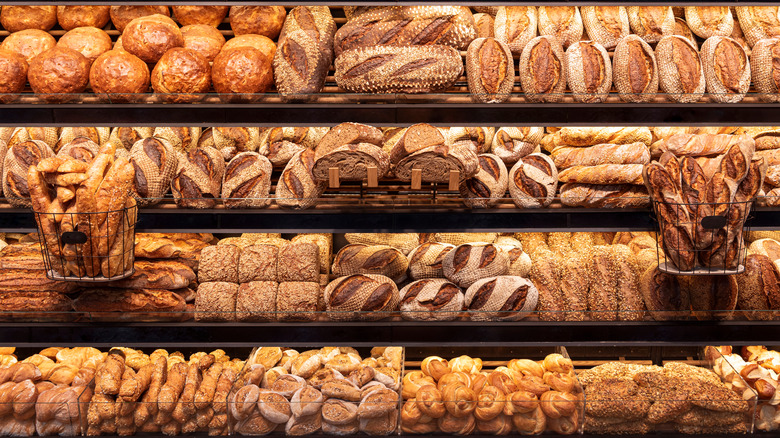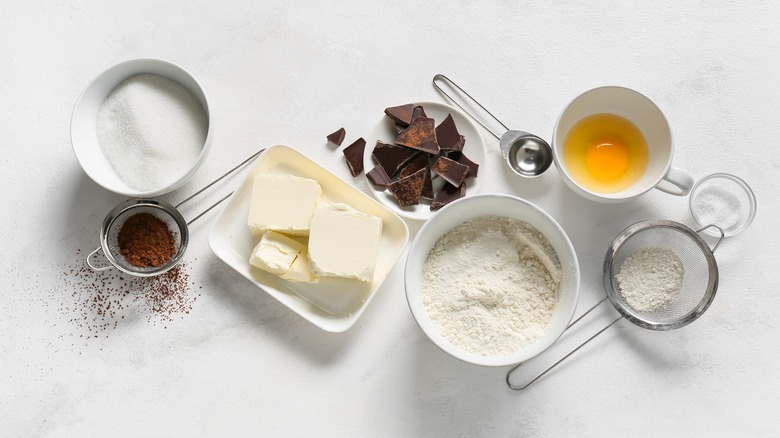The Science Behind Liquid's Vital Role In Delicious Baked Goods
Baking and cooking are different skills, which explains why some cooks find baking difficult, and some bakers just can't cook. When it comes to cooking, there's a lot of room for experimentation and substitutions. There are rules and formulas, sure, and recipes are great when you're a beginner cook – you have to learn to crawl before you can walk. But once you're comfortable with your skills and the rules, you can break them and still end up with something delicious. If you know what you're doing, substitutions are less likely to result in something inedible.
Baking, on the other hand, is an exercise in precision. The reason baking requires precision is that baking is also chemistry and physics – science. If you remember your science experiments from high school chemistry classes, you had to be quite exact with amounts and movements; otherwise, you'd risk endangering yourself or your classmates. Luckily, baking isn't that volatile, but if you make changes to the recipe, you might end up with a different texture and flavor of the finished product – a simple swap could result in deflated cakes or a stodgy sponge, so that means you can't swap baking powder for baking soda. Sometimes, it's not even human error that results in wonky baked goods. According to Farmer's Almanac, dry ingredients like flour and sugar absorb moisture from the air, which can affect how they perform. But don't underestimate the role that liquid plays in making delicious baked goods.
Liquids provide structure, moisture, and flavor to our favorite baked goods
If you look at a few baking recipes, like a chocolate cake recipe, or a chocolate chip cookie recipe, you'll see the same ingredients but in different amounts -– flour, eggs, sugar, baking soda, and baking powder. How you combine the ingredients and the ratio of dry ingredients to wet determines the end results. As "The Great British Baking Show" season 9 winner Rahul Mandal demonstrates on PhysicsWorld, the proportions of the same ingredients will result in different products, such as cakes, breads, and biscuits.
While flour provides structure and sugar provides sweetness and feeds your yeast, liquids have a few different tasks. We add liquids to provide structure and texture – the proteins in flour absorb water and begin to form the gluten network to enable rise. Liquids also add moisture, giving cakes a better crumb and texture – no one likes a dry cake. Using water in recipes also provides lift through evaporation. Think of a loaf of sourdough bread and all its holes or a light, airy Neapolitan pizza crust. Both start out as high-hydration doughs – sometimes as high as 70 percent, according to Bread Magazine.
The evaporation of the water in the form of steam makes for airy, deliciously chewy results. You'll see recipes call for different kinds of liquids like buttermilk or juice, which add flavor and acid, per the University of Nebraska – Lincoln. Liquids are a vital ingredient in baking that gives us the cakes and breads we love to eat.

